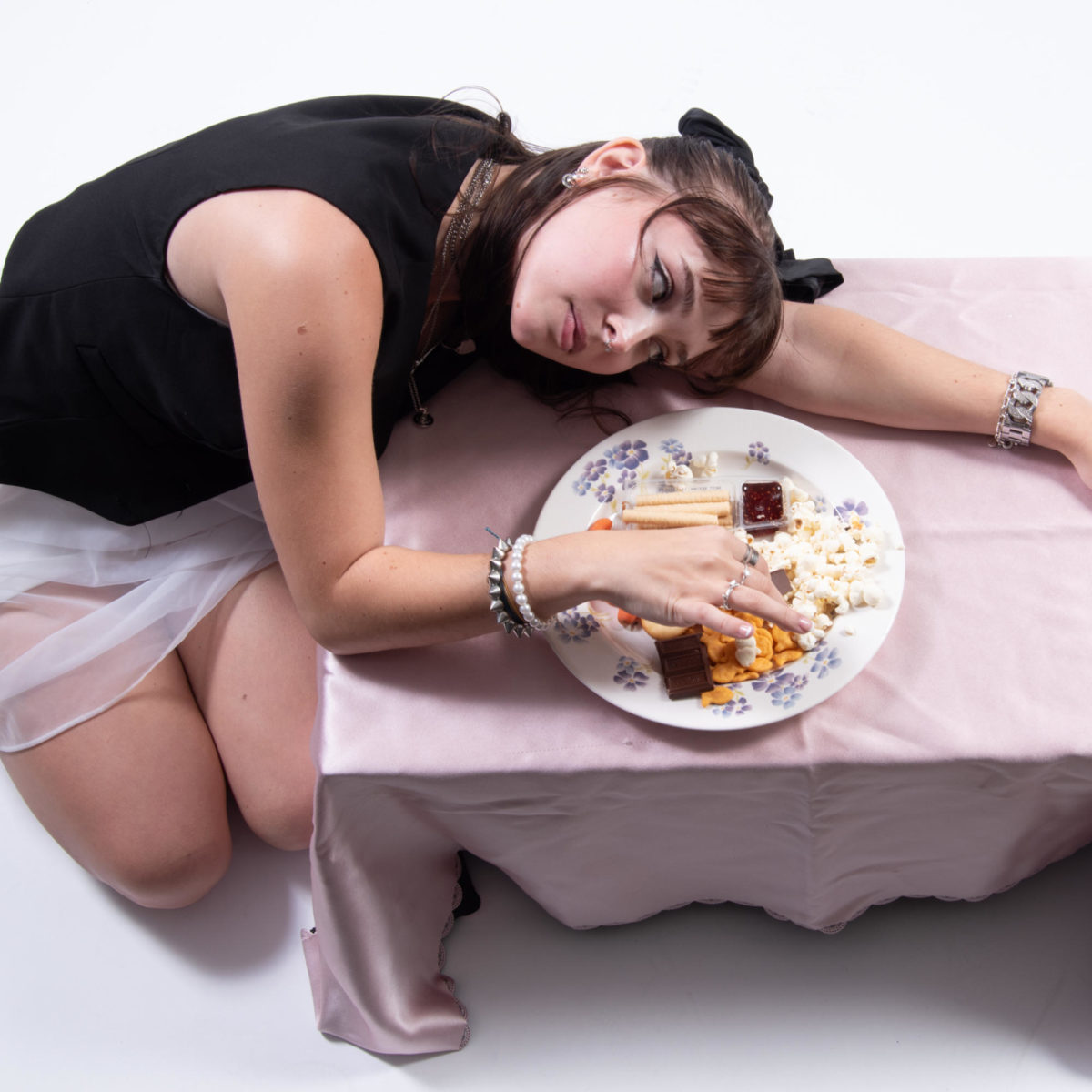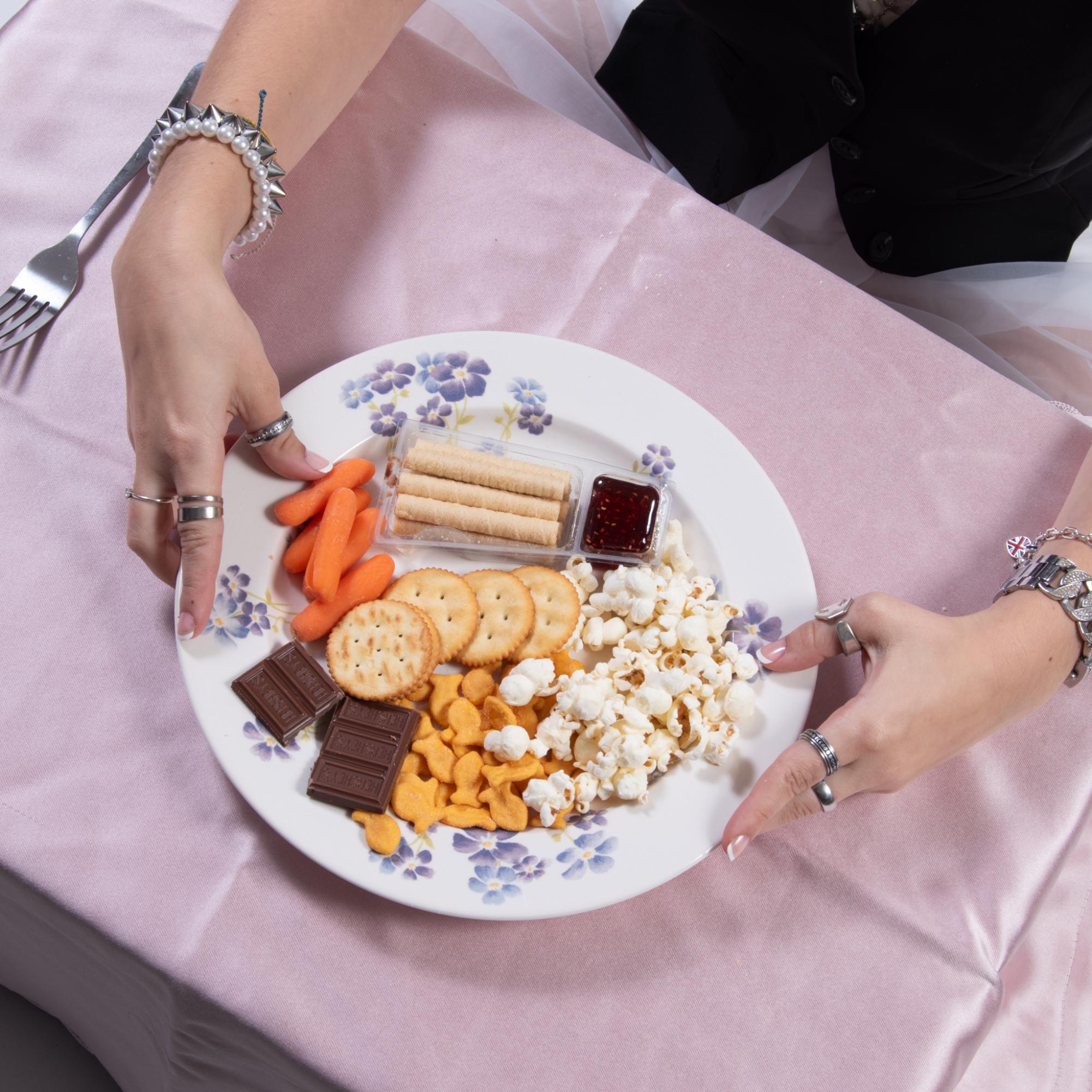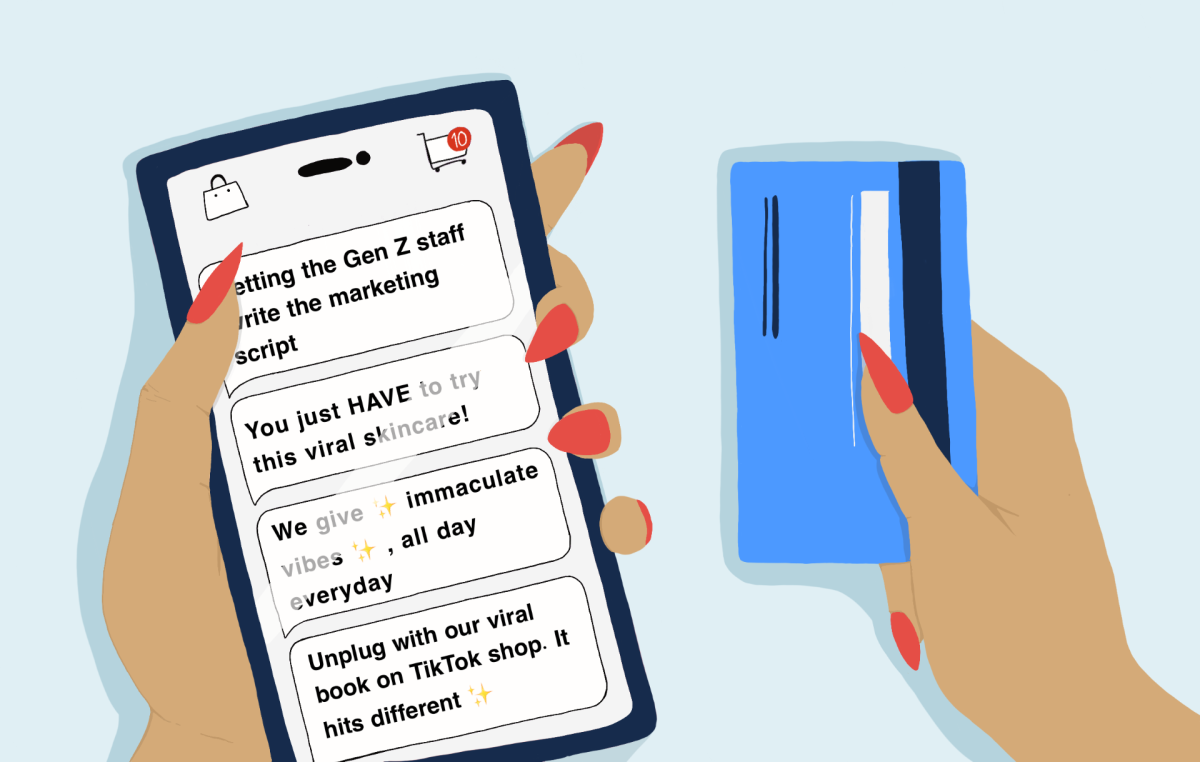Picture this: I get out of class at 8 p.m. Upon arriving home, I eat half a bag of salt and vinegar chips, then broccoli with soy sauce. It’s nothing to be ashamed of because it’s “girl dinner,” TikTok’s latest trend justifying mine, and so many others’, eating habits.
#GirlDinner brags over 2 billion views on TikTok, each video set to the jingle “girrrrrrl dinnerrrrr,” almost as sloppy as the meal itself. What is girl dinner? Nearly anything, it just doesn’t look like those rainbow food diagrams of health. Maybe it’s more charcuterie board-like, or it’s just eating something straight from the jar. Girl dinner, created by Olivia Maher, as fun and simple as it seems, has a controversial side. The dinner part of it could really mean anything. Girl dinner lacks any of the substance attributed to an actual dinner. It’s a snack substituting for a meal. But “girl” opens a whole can of worms that take us past a TikTok trend.
There’s no true female equivalent to “guy.” There’s man and woman, girl and boy. But nothing for “guy.” Guy is casual, it could really be anyone between the ages of a child and an old person. Is the female equivalent lady? No, it isn’t. “Lady” carries a weight, and “guy” simply doesn’t. “Lady” is a young woman, but it also suggests proper manners, etiquette and other archaic gender norms. Sometimes “woman” doesn’t feel right either, as that has its own societal pressures. So to avoid all of it, many of us revert to “girl.” The “girl” title removes the weight and expectations of womanhood. It’s like shedding a skin of responsibility. Looking a certain way, acting a certain way; all these things no longer become an issue when women label themselves girls, but it’s also infantilizing. Children don’t have responsibilities, but it also means they don’t have the privileges or respect of being an adult. Girls, literal children, don’t have the expectation of knowing what a nutritious meal looks like, and there’s also zero expectation for girls to cook for others. In her article “Please Don’t Gender My Dinner,” author Merlyn Miller argues “you might think… we’re past the days of assuming that women should be cooking for their husbands… but this fad is really just another way of reinforcing the trope that when a woman is cooking for a man, she makes a robust meal, but when she’s alone, she has a plate of cheese and crackers.”
Another argument against the trend is the belief that it promotes eating disorders, and many Kent State students agree. I asked a number of students on campus what they thought of the girl dinner trend and each of them mentioned their concerns about eating disorders. As Meg Lockmiller explained, “It’s a way of normalizing unhealthy eating habits. Girl, you’re eating four things, saltines and a GoGo squeez. But when people throw on the title it’s ‘oh it’s so silly’.” She further stated, “If it happens once in a while, that’s okay, but if it’s happening every night, it’s no longer girl dinner.” Another student, Brye Wheeler said, “Girl dinner started as a cute little fun trend, putting all your favorite snacks together on one plate. But it’s nutritious, not [eating disorder] core. People take it and make it not fun. But seeing people’s weird flavor combinations, while it’s nutritional and filling, [makes it] like a little blog.” So maybe the trend isn’t going out of its way to promote eating disorders, but it quickly feels like it’s normalizing them. By treating unhealthy eating as “just girly things,” it becomes a joke when really, nutritional eating is important and should be regarded as such.
On the other hand, students can acknowledge it doesn’t have to be taken that seriously. Not only that, the trend can have a positive effect too. Stella Skinner, after addressing the concerns about eating disorders, said “It can also make people feel better about what they eat. People can’t always pull together the fanciest meal. Sometimes I go home and eat ramen.” In the era of social media being plastered with aesthetically pleasing foodie pictures and the ‘That Girl’ trend of acai bowls and green smoothies, it can be relieving to see normal people eating whatever they have on hand, in the moment. There’s no need to feel guilty if you’re eating pickles out of the jar; everyone else is doing it in their own way. It also relieves women from the societal expectation of cooking a full meal. Whether girl, lady, or full adult, there is still the persistent concept of playing house, often stuck in the kitchen.
“The trend is more accepting of poor people too,” Skinner adds. As unfortunate as it is, she’s not wrong. According to the National Library of Medicine, “from 2019 to 2022, in contrast to the marked increase in the cost of the healthy foods and drinks in the recommended diet (17.9%), the cost of all the discretionary (unhealthy) foods and drinks in the habitual diet increased by ‘only’ 9.0%.” A survey from The Cleveland Clinic adds “Almost half of Americans (46%) view healthy food as being more expensive, while also citing a lack of time to prepare healthy meals (23%) and unfamiliarity with healthy ways of cooking (20%).” So people are unable to afford healthy food, and even if they were to, working to afford healthy food takes time away from cooking a healthy meal. The alternative? Girl dinner. It’s quick and easy with all your favorite tastes, no matter how weird when eaten together.
Girl dinner has its pros and cons and a certain amount of “take it as you will.” Going forward, maybe don’t internalize strangers’ on the internet eating patterns, whether it’s perfect fruit bowls or a stack of saltines. It’s okay to not have a planned meal every night, but nutrition and taking care of yourself are important and worth putting effort into. On the dying side of the trend, it’ll be interesting to see how it plays forward. Is it a short enough trend to fade into oblivion, or is it a constant enough topic that we’ll further normalize unhealthy dinners under the discordant jingle “girrrrrl dinnerrrrr.”
Support Student Media
Hi! I’m Annie Gleydura, A Magazine’s editor-in-chief. My staff and I are committed to bringing you the most important and entertaining news from the realms of fashion, beauty and culture. We are full-time students and hard-working journalists. While we get support from the student media fee and earned revenue such as advertising, both of those continue to decline. Your generous gift of any amount will help enhance our student experience as we grow into working professionals. Please go here to donate to A Magazine.



















